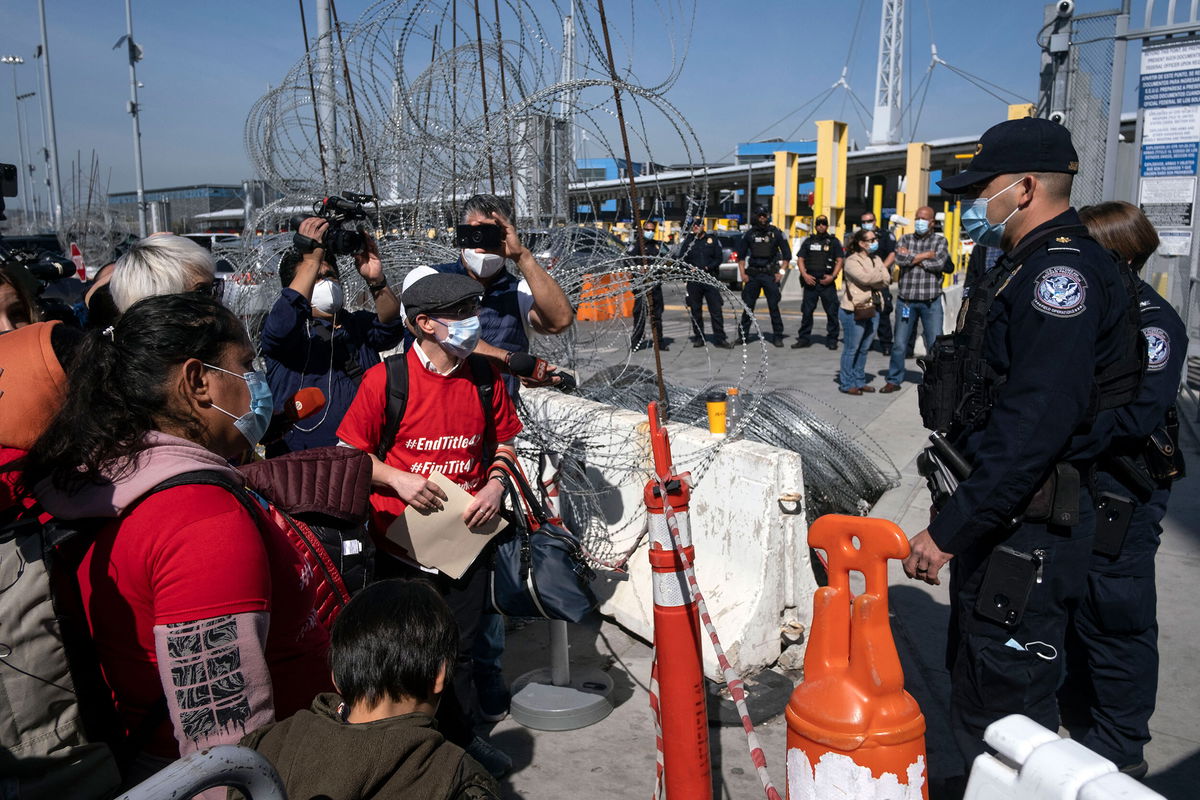Keeping Title 42 in place won’t slow US-Mexico border crossings, officials say

Keeping Title 42 in place won't slow US-Mexico border crossings
By Priscilla Alvarez, CNN
A court ruling blocking the termination of a Trump-era pandemic restriction at the US-Mexico border is unlikely to slow border crossings, Biden administration officials say, as migration in the Western hemisphere reaches new highs.
Since taking office, President Joe Biden has faced mounting pressure over his handling of the US-Mexico border, dividing members of his own party following a decision by the US Centers for Disease Control and Prevention to lift Title 42, which allows authorities to swiftly turn people away at the border, effectively barring migrants from seeking asylum.
Republicans hammered the administration for not being tough enough on the border. Some Democrats and immigrant advocates, meanwhile, say the White House has waited too long to rescind it. Regardless, a federal court ruling means the administration will be forced to keep it in effect for now.
Along the northern border of Mexico, advocates say some migrants remain undeterred and desperate. “I don’t think that just because Title 42 didn’t go away today that people are thinking that was the one and only way they were going to get over,” said Sam Bishop, Mexico country director for Global Response Management.
“To me, the lack of some sort of visible and major outcry today in particular or since Friday, is kind of an indication that this isn’t the only thing they’re necessarily waiting for,” Bishop, who works directly with migrants, added.
Over the weekend, following the court ruling, Border Patrol agents arrested more than 500 migrants in the Rio Grande Valley sector alone, which covers south Texas, according to US Customs and Border Protection. And in Yuma, Arizona, border agents arrested over 1,500 migrants in a 24-hour period over the weekend, a Homeland Security official told CNN.
Migration is at new highs amid deteriorating conditions in Latin America that were exacerbated by the coronavirus pandemic. At the US southern border, about 40% of border crossers are now from countries outside of Mexico and the Northern Triangle countries of Guatemala, Honduras and El Salvador, according to a Homeland Security official.
The Department of Homeland Security, officials say, is operating under the belief that numbers will remain high even with Covid-19 border restrictions still in place. The number of border crossings generally increase in the spring, but the current pace of record numbers highlights the continued urgency on the US-Mexico border.
For months, DHS prepared for the future lifting of Title 42, which was invoked at the onset of the coronavirus pandemic, while grappling with around 7,000 border crossers daily.
In a statement following Friday’s ruling, DHS maintained the department would press forward with preparations to manage a potential increase of migrants at the border. Officials are also racing to strike agreements with countries in the region to stem the flow of migrants journeying to the US southern border.
DHS is similarly working with Mexico to mitigate traffic along key areas on the US southern border, like patrols, checkpoints, and going after smugglers, the agency official said.
More than 6 million Venezuelan refugees and migrants have fled the country, according to DHS. Nicaraguans have also increasingly been migrating, as well as Haitians who had moved to the region years ago. Arrangements on migration management have already been struck with Costa Rica and Panama — two countries that migrants pass through when heading to the US southern border.
In the interim, though, a range of nationalities continue to journey to the US southern border. Some of those pose a challenge to the Biden administration because they can’t easily be expelled under Title 42 or deported — at times, fueling more migrants from those regions.
Cubans, for example, are more difficult to expel given poor US-Cuba relations. Between last October and April, border authorities stopped nearly 114,000 Cubans along the US-Mexico border, far outpacing recent years, CBP data shows.
“What US enforcement policy tends to do over the long term is shape who comes, rather than how many people come,” said Andrew Selee, president of the Migration Policy Institute, a nonpartisan think tank. “Title 42 matters on shaping who comes, but it may not be the biggest factor in how many people come.”
Still, Republicans and vulnerable Democrats urged the Biden administration to keep Title 42 in effect, arguing it was a necessary tool until a comprehensive plan to manage the border was in place.
Friday’s ruling, which found the administration should’ve gone through the months-long rulemaking process before terminating the authority, means Title 42 will likely stay in place for months to come.
“We’ll continue seeing the bottle neck on the Mexican side of the border and it really doesn’t resolve much,” Tucson, Arizona, Mayor Regina Romero told CNN, when asked about Friday’s ruling. “I’ve said over and over again that Title 42 is not an immigration tool. It is a public health order.”
The-CNN-Wire
™ & © 2022 Cable News Network, Inc., a WarnerMedia Company. All rights reserved.